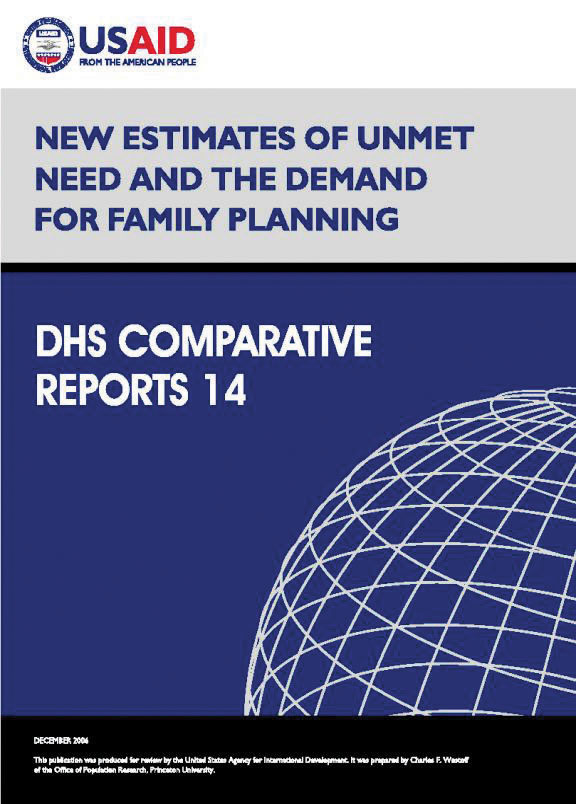- PUBLICATIONS
- JOURNAL ARTICLES
- ACCESS PUBLICATIONS
Publications Summary
- Document Type
- Comparative Reports
- Language
- English
- Recommended Citation
- Westoff, Charles F. 2006. New Estimates of Unmet Need and the Demand for Family Planning. DHS Comparative Reports No. 14. Calverton, Maryland, USA: Macro International
- Download Citation
- RIS format / Text format / Endnote format
- Publication Date
- December 2006
- Publication ID
- CR14
Download
 New Estimates of Unmet Need and the Demand for Family Planning (PDF, 776K)
New Estimates of Unmet Need and the Demand for Family Planning (PDF, 776K)
